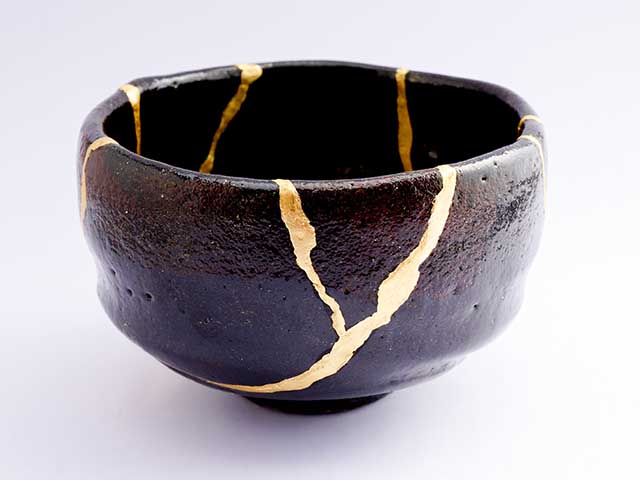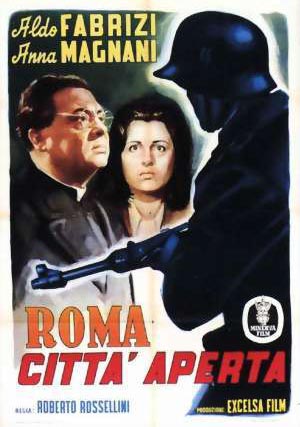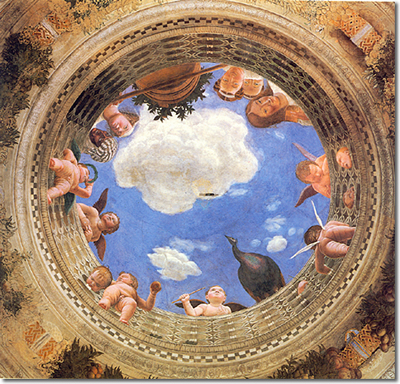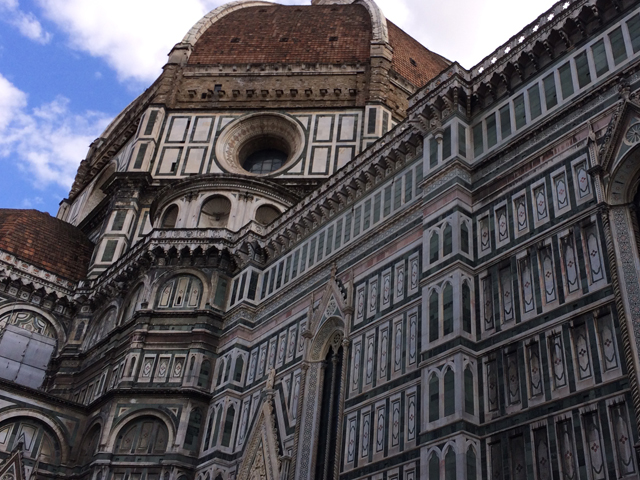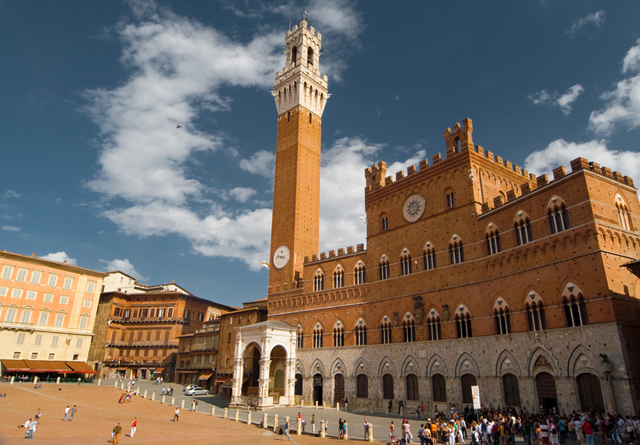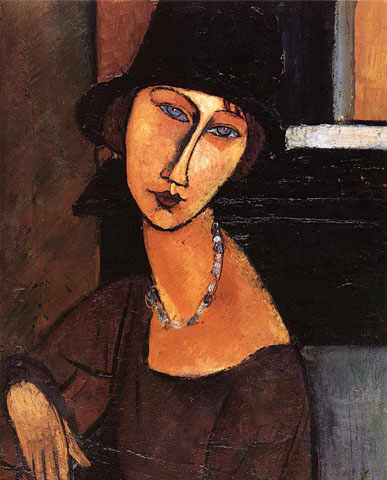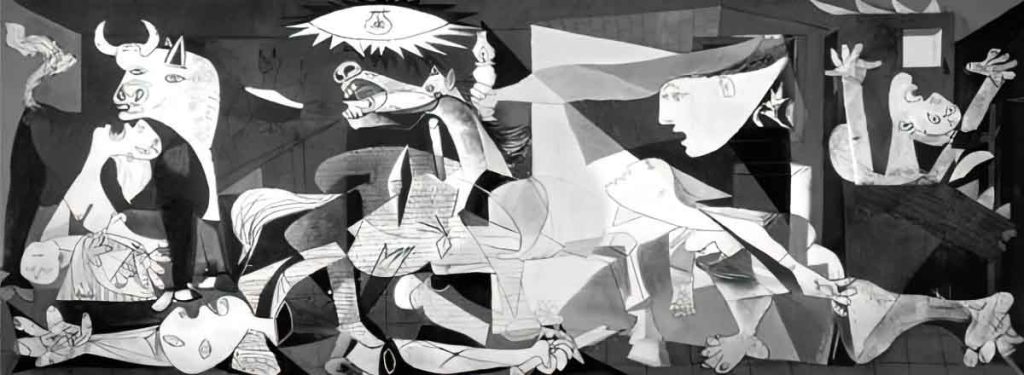
Guernica: Ricordo di un mondo dove Picasso può dipingere
Guernica: Reminder to keep the world a place where Picasso can paint
“Un’opera d’arte deve far reagire l’uomo… deve agitarlo e scuoterlo.”
“A work of art must make a man react… it must agitate him and shake him up.”
— Pablo Picasso —
Il grido di Guernica
The Cry of Guernica
La Guernica è senza dubbio una delle opere d’arte più celebri di Pablo Picasso. Questo dipinto monumentale è un potente manifesto contro la guerra, realizzato in risposta al bombardamento indiscriminato della città basca di Guernica da parte dei nazisti durante la Guerra Civile Spagnola alla fine degli anni Trenta. Picasso lo dipinse come pezzo centrale del Padiglione Spagnolo per l’Esposizione Universale del 1937 a Parigi. Con cavalli in agonia, madri urlanti e bambini morti, l’opera cattura graficamente le tragedie della guerra e la distruzione insensata di vite innocenti.
Guernica is undoubtedly one of Pablo Picasso’s most famous works of art. This monumental painting is a powerful antiwar statement created in response to the Nazis’ indiscriminate bombing of the Basque town of Guernica during the Spanish Civil War in the late 1930s. Picasso painted it as the centerpiece of the Spanish Pavilion at the 1937 World’s Fair in Paris. Depicting agonized horses, wailing mothers, and dead children, the piece graphically captures the tragedies of war and the senseless destruction of innocent lives.
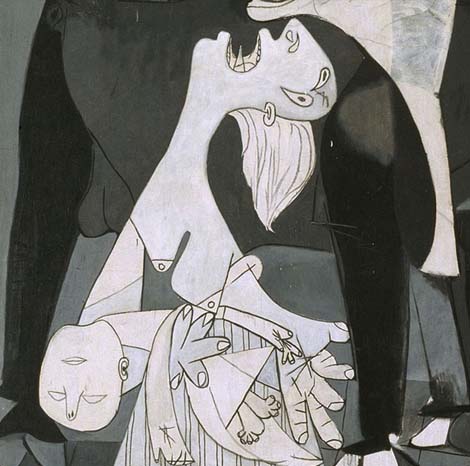
Un contesto storico di dolore
A Historical Context of Suffering
Guernica è un piccolo paese nei Paesi Baschi. Durante la Guerra Civile Spagnola, era considerato un baluardo del movimento di resistenza repubblicano che si opponeva alla dittatura nazionalista del generale Francisco Franco. Franco, alleato di Hitler, mirava a riportare la Spagna ai suoi giorni di gloria basati su un rigido sistema di legge, ordine e valori cattolici tradizionali. Tuttavia, i suoi metodi erano spietati: il regime fu responsabile della repressione e della morte di circa 400.000 oppositori politici, attraverso il lavoro forzato e le esecuzioni nei campi di concentramento.
Guernica is a small town in the Basque Country. During the Spanish Civil War, it was considered a stronghold for the Republican resistance against General Francisco Franco’s Nationalist dictatorship. Franco, aligned with Hitler, sought to return Spain to its glory days based on a rigid system of law and traditional Catholic values. However, his methods were ruthless: the regime was responsible for the repression and deaths of nearly 400,000 political opponents through forced labor and executions in concentration camps.
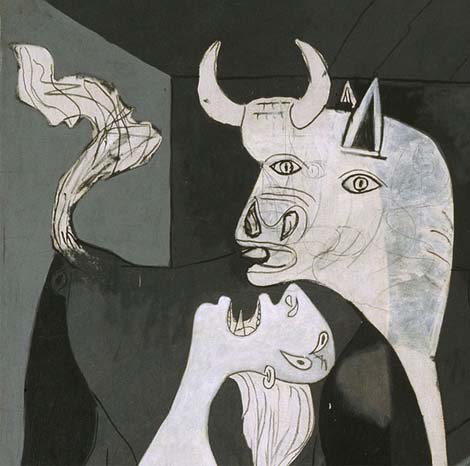
L’orrore del 26 aprile 1937
The Horror of April 26, 1937
Lunedì 26 aprile 1937, gli aerei della Legione Condor tedesca—uno degli alleati della Spagna—bombardarono Guernica per circa due ore. I tedeschi usarono l’occasione per aiutare Franco a reprimere i partigiani e per testare nuove armi. L’attacco fu controverso, coinvolgendo per la prima volta un alto numero di civili.
On Monday, April 26, 1937, warplanes of the German Condor Legion—one of Spain’s allies—bombed Guernica for about two hours. The Germans used the opportunity to assist Franco in suppressing the partisans and to test new weapons. The attack was controversial, as it involved a high number of civilian casualties.
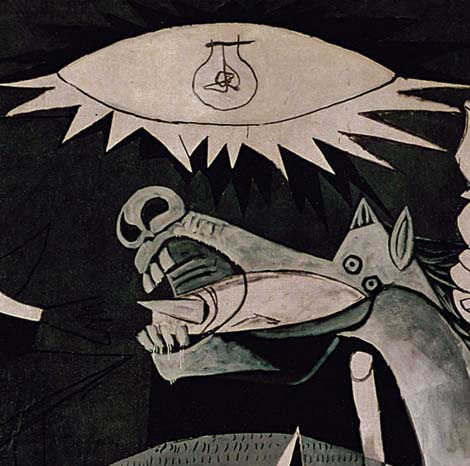
È lei che ha fatto questo orrore?”
“No, è opera vostra.”
Did you make that horror?
“No. That is your work.”
(Risposta di Picasso all’ambasciatore tedesco Otto Abetz,
in vista al suo studio, difronte ad una fotografia di Guernica)
(Picasso’s response to the German ambassador Otto Abetz,
during a visit to his studio, in front of a photograph of Guernica)
L’arte come testimonianza
Art as Testimony
Attraverso l’arte, Picasso riuscì a portare l’attenzione su questo atto violento e ad aprire gli occhi del mondo sugli eventi che si stavano verificando nella sua patria. Non descrive la scena come uno spettatore, ma piuttosto attraverso forme, figure e colori—o meglio, l’assenza di colori—esprime il significato della guerra, della repressione e della crudeltà. Il murale, di dimensioni enormi, è dipinto in tonalità di grigio e nero. La simbologia è complessa, ma il messaggio principale è la sofferenza e il dolore umano. Il quadro non glorifica la vittoria o l’eroismo, bensì sottolinea la natura distruttiva della guerra.
Through art, Picasso brought attention to this violent act and opened the world’s eyes to the events taking place in his homeland. He does not depict the scene as a spectator; instead, through shapes, figures, and colors—or rather the lack of color—he conveys the meaning of war, repression, and cruelty. The oversized mural is painted in shades of gray and black. Its symbolism is complex, but the central message is one of suffering and human pain. The painting does not glorify victory or heroism but highlights war’s destructive nature.
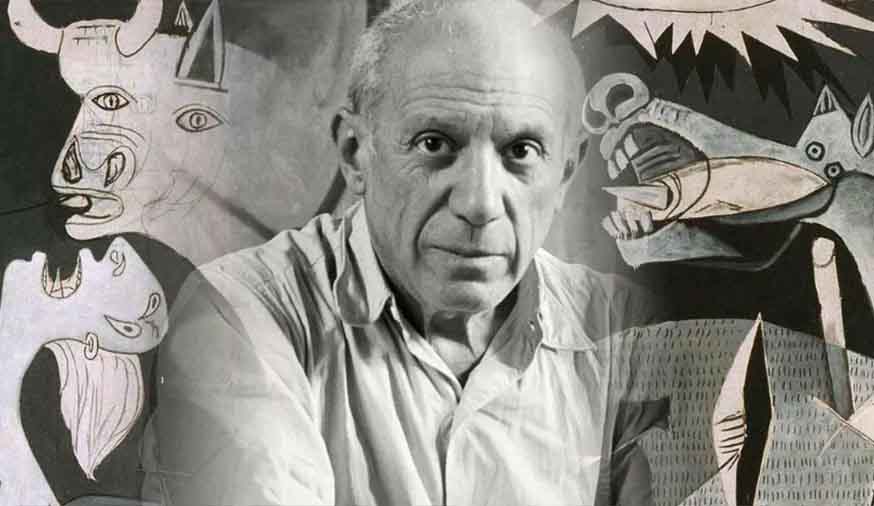
Da Parigi a Madrid: il viaggio della Guernica
From Paris to Madrid: Guernica’s Journey
La Guernica ricevette una certa notorietà a Parigi durante l’Esposizione Universale e, per due anni, fu esposta in Europa. Nel 1939, quando il governo di Franco sconfisse il movimento repubblicano e prese il controllo del paese, non era sicuro riportare il murale in Spagna. Con l’inizio della Seconda Guerra Mondiale, non era sicuro nemmeno lasciarlo in Europa. Fu trasferito negli Stati Uniti, dove rimase esposto per decenni al Museum of Modern Art (MoMA) di New York.
Guernica gained some notoriety in Paris during the World’s Fair, and for two years it was displayed across Europe. In 1939, when Franco’s government defeated the Republican movement and took control of the country, it was not safe to return the mural to Spain. With the onset of World War II, it wasn’t safe to keep it in Europe either. It was moved to the United States, where it was exhibited for decades at the Museum of Modern Art (MoMA) in New York.
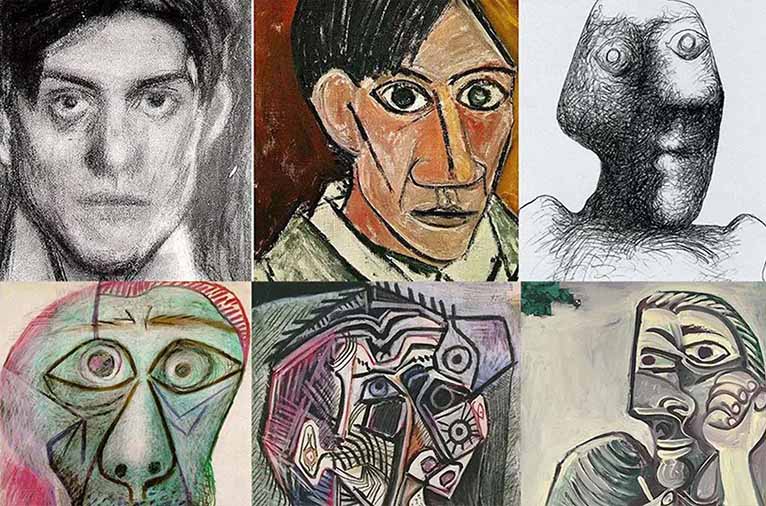
The difference in styles is testimony to his constantly evolving expression
Il ritorno in Spagna
The Return to Spain
Picasso credeva fermamente che il dipinto appartenesse al popolo spagnolo, ma solo nel 1981, diversi anni dopo la morte di Franco, il murale fu finalmente restituito alla Spagna. Ora è esposto al Museo Nacional Centro de Arte Reina Sofía a Madrid.
Picasso firmly believed that the painting belonged to the people of Spain, but it wasn’t until 1981, several years after Franco’s death, that the mural was finally returned to Spain. It is now displayed at the Museo Nacional Centro de Arte Reina Sofía in Madrid
Siamo fortunati a vivere in un mondo in cui il dipinto di Picasso esiste ancora, e le forze che cercarono di zittire la sua voce, alla fine, sono state ridotte al silenzio. Guernica continua a ricordarci le atrocità della guerra e ci insegna che il pennello, come la penna, può essere un’arma potente contro l’oppressione.
We are fortunate to live in a world where Picasso’s painting still exists, and the forces that tried to silence his voice were ultimately silenced instead. Guernica remains a powerful reminder of the atrocities of war and teaches us that the paintbrush, like the pen, can be a mighty weapon against oppression.
Guernica Reinactment
Guernica what Inspired Picasso’s Master piece
Read the novel that was inspired by Pablo Picasso and Guernica
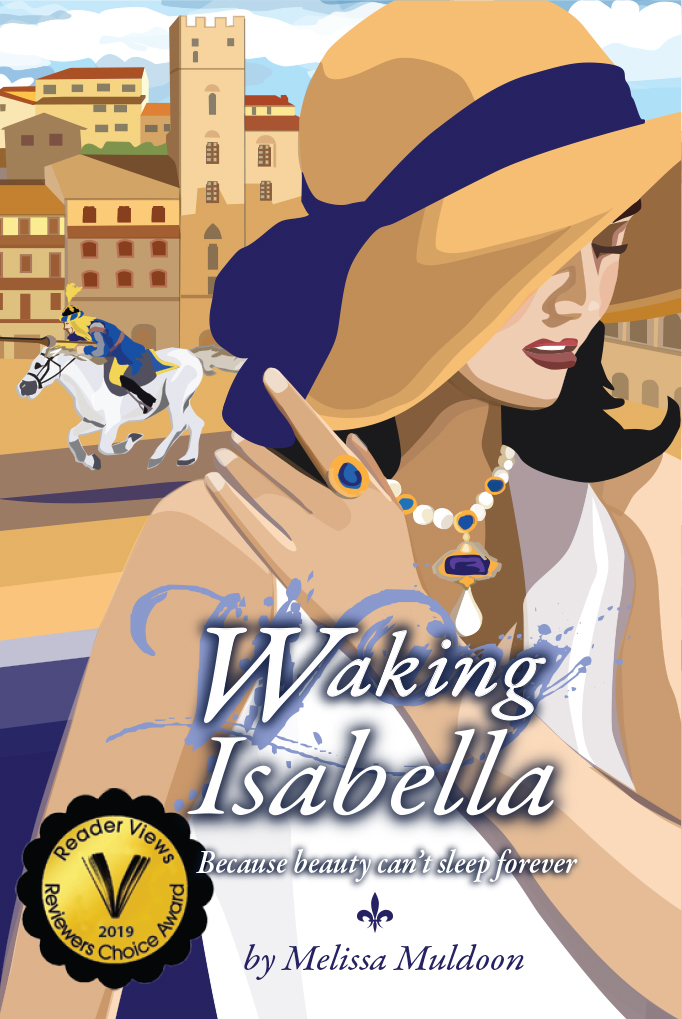
Waking Isabella
Waking Isabella is a story about uncovering hidden beauty that, over time, has been lost, erased, or suppressed. It also weaves together several love stories as well as a few mysteries. Nora, an assistant researcher, is a catalyst for resolving the puzzle of a painting that has been missing for decades. Set in Arezzo, a small Tuscan town, the plot unfolds against the backdrop of the city’s antique trade and the fanfare and pageantry of its medieval jousting festival. While filming a documentary about Isabella de’ Medici—the Renaissance princess who was murdered by her husband—Nora begins to connect with the lives of two remarkable women from the past. Unraveling the stories of Isabella, the daughter of a fifteenth-century Tuscan duke, and Margherita, a young girl trying to survive the war in Nazi-occupied Italy, Nora begins to question the choices that have shaped her own life up to this point. As she does, hidden beauty is awakened deep inside of her, and she discovers the keys to her creativity and happiness. It is a story of love and deceit, forgeries and masterpieces—all held together by the allure and intrigue of a beautiful Tuscan ghost.
